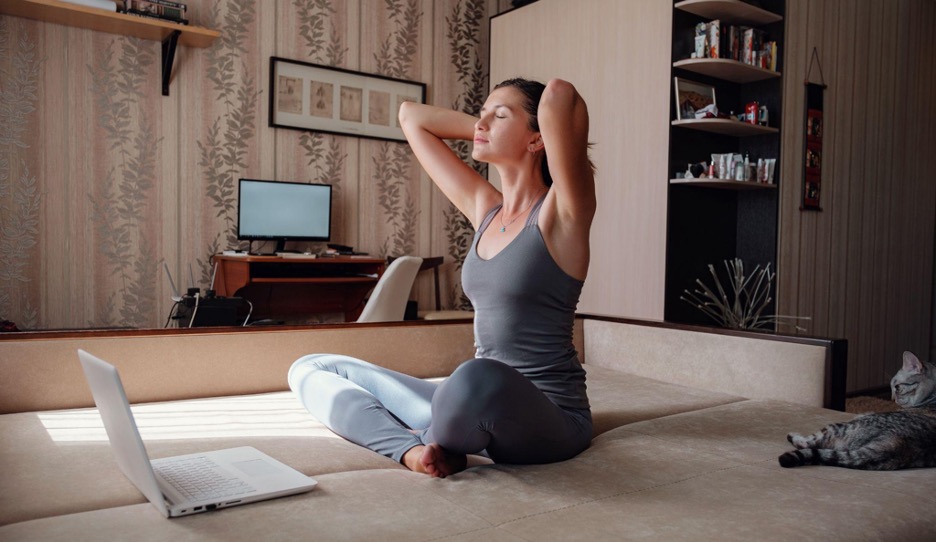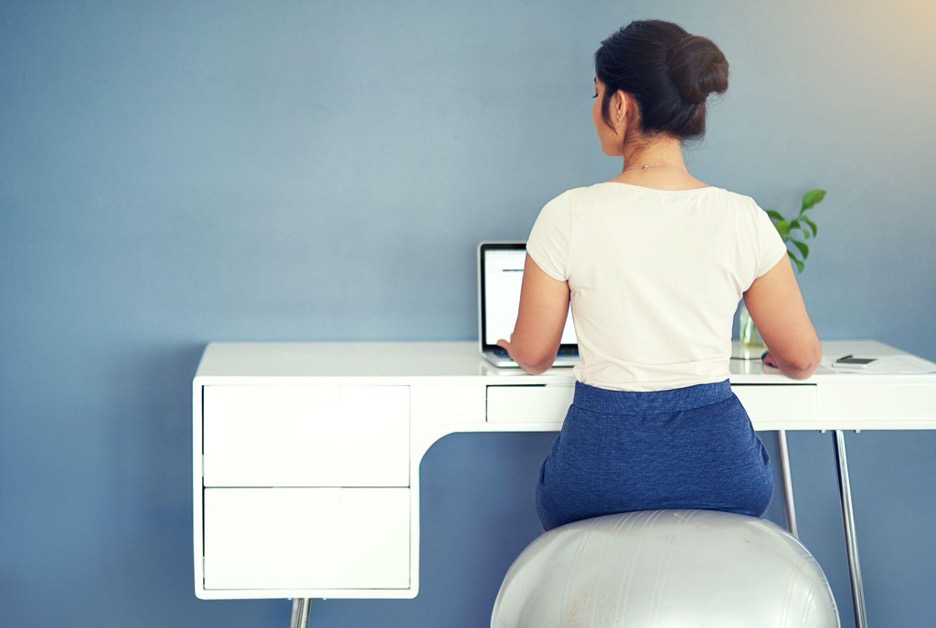Now more than ever, professionals across the globe are getting used to working from home. Ever since the COVID-19 pandemic, more and more companies have made a compromise, cancelled their offices and are now appreciative of their new remote setup.
While this arrangement offers comfort and flexibility, it comes with its unique set of physical challenges. Everything from poor sitting habits to inactivity, as well as makeshift workspaces, can negatively impact your well-being. It’s no secret that humans weren’t built for a sedentary lifestyle, and as such, it takes its toll on one’s physical condition.
The good news is that with a little awareness, you can make simple yet effective changes to improve your posture and prevent problems. Here is how.
Sitting posture while working from home
It might seem innocuous in the first few months, as we are already used to sitting in our own homes at our desks or dinner tables. So it’s no wonder that, when working from home, your body adapts to the environment, be it an ergonomic desk or a kitchen chair. However, sitting down for your lunch cannot be compared to an 8-hour shift, where you sometimes get so absorbed in work that you forget to stand up even for a few hours straight.
Luckily, there are plenty of tips and tricks to help you adapt to this unusual working environment. Firstly, it is important to fix your screen to be at eye level, while your feet should be flat on the floor, maintaining your knees at a 90-degree angle.
In addition, try to avoid lounging on the couch or bed with your laptop for unnatural lengths of time. Even though this might sound tempting, these positions cause spinal curvature and strain. Ultimately, buying a proper desk chair or even a standing desk will make a world of difference.
What is bad posture?
The first image that comes to mind is a banana-shaped slouching posture that we all got scolded for at least once during our school days. But bad posture isn’t simply a slouched form; it is a slouched feeling, too. This means constant discomfort in the (usually lower) back, tension in the shoulders, stiffness in the neck, and it even goes as far as to cause migraines. Your bad posture could be the culprit for all of these symptoms. Hours on end spent sitting coupled with a curved spine as well as rounded shoulders creates muscle imbalance and obstrusiveness, making eye-strain the least of your problems.
Benefits of proper posture when working from home
Good posture is all about alignment. Think of it like this: your ears, shoulders, and hips should all sit in a straight line. Your back should be straight, though not stiff, while your shoulders should be relaxed but not rolled forward. Remember to keep your elbows at approximately 90 degrees to your side and keep your legs uncrossed, not to block blood circulation.
Finally, proper posture means little if you don’t take breaks regularly. The body needs to move, stretch and relax often, so make sure that you change your position and stand throughout the day.
How to fix posture?
Small adjustments in your posture and simply being aware of the shape of your back go a long way. Make sure to check in with your body and try to incorporate small habitual changes, stretches and simple physical exercises. Streamline your workspace to encourage and support neutral body position. For example, you can also set goals to check your shoulder placement every hour. Are they creeping up?
Little corrections make a great difference. Considering ergonomic tools will enhance your experience, have a lumbar pillow, footrest, an ergonomic mouse, or even a monitor riser on standby to maintain alignment easily.
Exercises for better posture
The importance of regular movement cannot be stressed enough. To put it simply, it must be done every day, regardless of how little. Adding exercises for your posture will aid in muscle memory while helping to correct bad habits. Let’s check out some of the best exercises:
- Angels on the Wall – for shoulder and upper back activation, imagine you are doing a snow-angel while leaning on the wall.
- Cat-Cow Stretches – for greater spinal mobility do this yoga exercise: get on your hands and knees with a spine straight as an arrow. Inhale deeply to round your spine outwards and then exhale into the opposite arch-like shape while bringing your body to a cat-like position. Repeat the sequence a few times to relax the back, as well as the mind.
- Chest Openers – for tight pectorals, open your chest often while standing, sitting, or even lying down.
- Planks and Bridges – to strengthen the core and the lower back, stabilise the body with this common exercise.
- Chin Tucks – for neck realignment, stretch patiently and slowly forwards, backwards and to the sides. Do not make sudden or quick movements with your head, as this is a rather sensitive body part.
Real-life assistance using SupportFit
When you are working from home, it’s easy to fall into unhealthy routines. You might roll out of bed and head straight to your desk, barely move all day, snack more than usual, and go to bed feeling stiff and drained. That is exactly why SupportRoom created SupportFit.
SupportFit services help individuals trying to balance their remote job with their physical activity, nutrition, rest, and sleep, all of which are essential for good posture and overall well-being.
You can easily sync SupportFit with your external devices, such as Apple Health, Samsung Health, and Fitbit. Let’s say you are deep into a project and haven’t moved for hours. SupportFit sends you a gentle reminder—it is time to stand up and stretch. You pause, do a few wall angels or a short desk workout from the app’s suggestions, and feel the tension in your shoulders melt away.
Later, it tracks how well you slept and helps you spot a pattern: on days when you moved more, you slept better. Little things, but they add up.
SupportFit doesn’t demand a complete lifestyle overhaul—it just nudges you in the right direction. Better life habits are experienced in several dimensions, not just reduced sitting time. Whether it’s reminding you to take a walk, showing you a quick home workout, or helping you keep an eye on your sleep and eating habits, it is there to support you in creating a better daily rhythm, one small step at a time.






